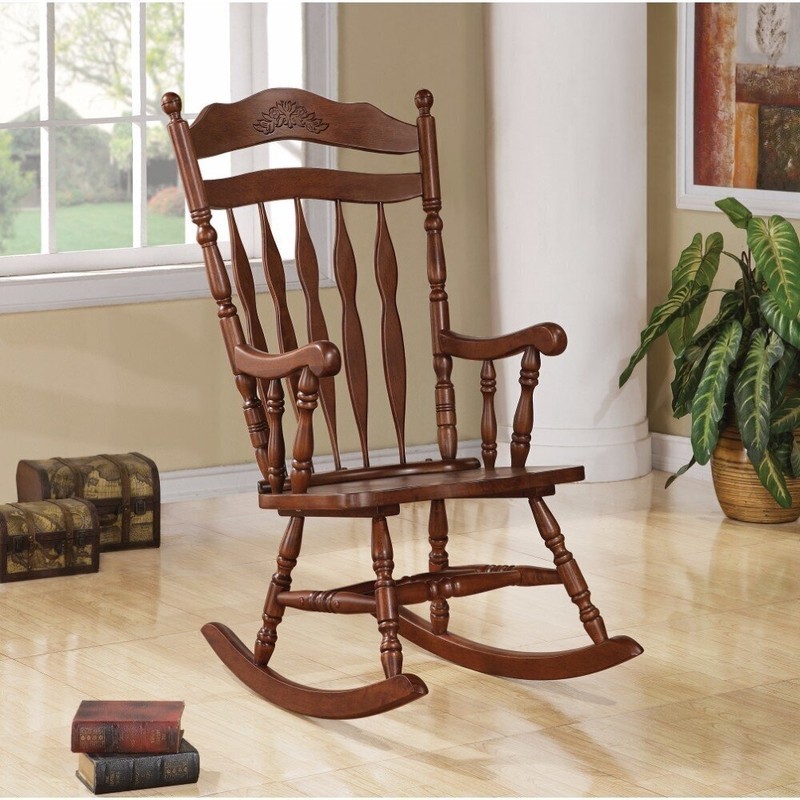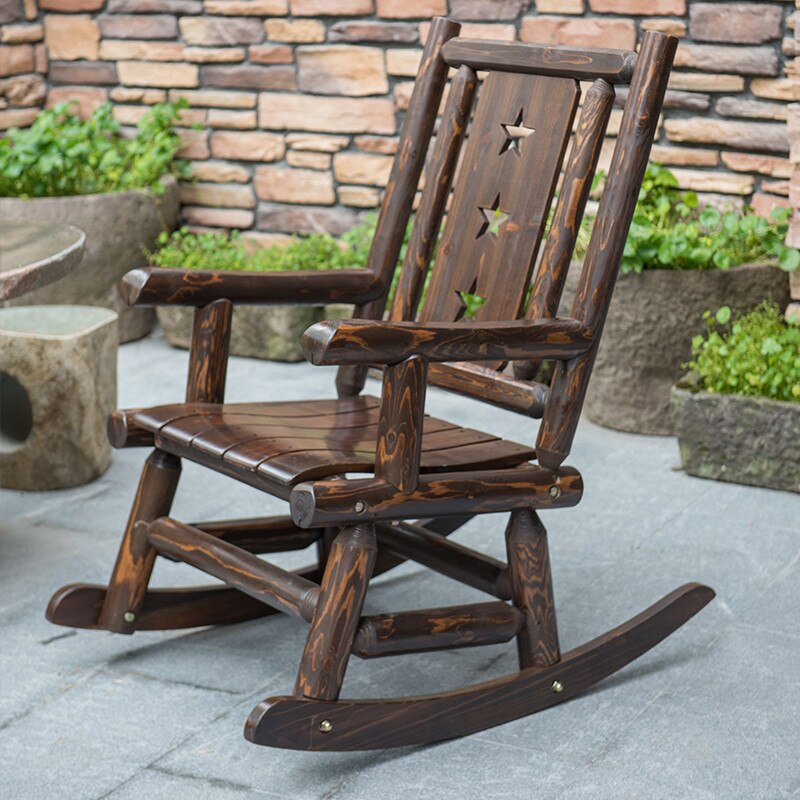History and Evolution of Traditional Rocking Chairs in the UK

The rocking chair, a symbol of comfort and relaxation, has a long and fascinating history in the UK, evolving from humble beginnings to become an iconic piece of furniture. While the rocking chair’s exact origins remain somewhat shrouded in mystery, its presence in the UK can be traced back to the 18th century, with its popularity steadily increasing over time.
Early Designs and Origins
The earliest rocking chairs in the UK were likely inspired by similar designs from North America, where rocking chairs had already gained popularity among colonists. These early chairs were typically simple in construction, often made from readily available materials like wood and woven cane. They featured a wide, gently curved seat and two rockers, usually made from solid wood or metal, attached to the underside of the chair’s frame.
Craftsmanship and Materials Used in Traditional Rocking Chairs: Traditional Rocking Chair Uk

The artistry of traditional rocking chair making in the UK is deeply rooted in a legacy of skilled craftsmanship and a discerning eye for quality materials. These chairs are not merely furniture; they are testaments to the enduring skill and artistry of generations of British woodworkers.
Types of Wood Used in Traditional Rocking Chairs, Traditional rocking chair uk
The selection of wood is paramount in crafting a durable and aesthetically pleasing rocking chair. Traditional British rocking chairs often showcase the beauty and strength of native hardwoods.
- Oak: Renowned for its durability and rich grain patterns, oak is a popular choice for rocking chair frames. It’s known for its strength and resistance to wear and tear, making it ideal for enduring the constant rocking motion.
- Beech: Beechwood is prized for its smooth grain and ability to be easily worked. It is often used for the chair’s seat and back, adding comfort and elegance.
- Ash: This wood is known for its flexibility and strength, making it suitable for the chair’s runners, which are the curved pieces that allow the chair to rock.
- Mahogany: While less common in traditional British rocking chairs, mahogany is occasionally used for its rich color and beautiful grain patterns.
Traditional Joinery Techniques
Traditional joinery techniques are essential for constructing a rocking chair that is both strong and aesthetically pleasing.
- Mortise and Tenon Joints: These are strong and durable joints, commonly used to join the legs to the frame of the chair. A tenon is a projection on the end of one piece of wood, which fits into a mortise, a hole cut into the other piece. This creates a very secure joint that can withstand the stress of rocking.
- Dovetail Joints: These joints are often used to join the seat to the frame. They are strong and visually appealing, with a distinctive interlocking pattern that adds to the chair’s aesthetic.
- Through Tenons: These tenons extend through the piece of wood they are joining, and are then secured with a peg or dowel. This type of joint is often used for the runners, adding strength and durability.
Finishing Techniques
The final finishing touches are what bring a rocking chair to life, highlighting its natural beauty and enhancing its longevity.
- Polishing: Traditional rocking chairs are often polished with a natural wax or oil, which protects the wood and enhances its natural sheen.
- Painting: While less common in traditional rocking chairs, painting can be used to add a decorative touch or to protect the wood from moisture.
- Caning: Caning is a traditional technique used to create the seat of a rocking chair. This involves weaving strips of cane or rush to form a strong and comfortable seat.
Popular Styles and Designs of Traditional Rocking Chairs in the UK

The UK boasts a rich history of rocking chair design, with various styles emerging over the centuries. These designs reflect the craftsmanship and cultural influences of the time, showcasing a range of materials, construction techniques, and aesthetic preferences.
Popular Styles and Designs of Traditional Rocking Chairs in the UK
Here are some of the most popular styles of traditional rocking chairs in the UK:
Windsor Rocking Chairs
The Windsor style, known for its simple yet elegant design, originated in the 18th century. It features a distinctive spindle back, often crafted from turned wood, and a comfortable, contoured seat. Windsor rocking chairs were initially made for everyday use and were popular in both homes and taverns.
- Key Features: Spindle back, turned legs, contoured seat, often made from beech or elm wood.
- Historical Context: Originated in the 18th century, popularized in the 19th century.
- Variations: Windsor rocking chairs come in various designs, including variations in the number of spindles, the shape of the seat, and the style of the rockers.
Ladderback Rocking Chairs
Ladderback rocking chairs, with their distinctive vertical slats resembling a ladder, have been a popular choice in the UK for centuries. They are known for their sturdy construction and classic look, often featuring a simple, rectangular seat.
- Key Features: Vertical slats (ladderback), rectangular seat, often made from oak or elm wood.
- Historical Context: Dating back to the 17th century, popularized in the 18th and 19th centuries.
- Variations: Variations include the number of slats, the shape of the seat, and the style of the rockers.
Country Rocking Chairs
Country rocking chairs are known for their rustic charm and often feature simple, unadorned designs. They are often made from locally sourced wood, such as oak or pine, and may feature rustic finishes.
- Key Features: Simple, unadorned design, often made from locally sourced wood, rustic finishes.
- Historical Context: Popularized in the 19th century, particularly in rural areas.
- Variations: Variations include the shape of the back, the style of the rockers, and the type of wood used.
Victorian Rocking Chairs
Victorian rocking chairs are characterized by their ornate designs and often feature intricate carvings, tufted upholstery, and elaborate details. They were popular during the Victorian era, reflecting the era’s penchant for elaborate furniture and decorative elements.
- Key Features: Ornate designs, intricate carvings, tufted upholstery, often made from mahogany or walnut wood.
- Historical Context: Popularized in the Victorian era (1837-1901), reflecting the era’s aesthetic preferences.
- Variations: Variations include the shape of the back, the style of the arms, and the type of upholstery.
Art Deco Rocking Chairs
Art Deco rocking chairs, with their geometric patterns and streamlined forms, emerged in the 1920s and 1930s. They were inspired by the Art Deco movement, which emphasized bold lines, geometric shapes, and luxurious materials.
- Key Features: Geometric patterns, streamlined forms, often made from exotic woods or metal.
- Historical Context: Popularized in the 1920s and 1930s, influenced by the Art Deco movement.
- Variations: Variations include the shape of the back, the style of the arms, and the use of different materials.
Traditional rocking chair uk – Traditional rocking chairs in the UK are a beloved sight, evoking a sense of warmth and comfort. And just like those cherished classics, a natural wood rocking chair can become a cherished part of your nursery, bringing a touch of timeless elegance and a gentle rhythm to your little one’s world.
Whether it’s a classic design or a modern twist, a rocking chair adds a touch of history and serenity to any room, making it a truly special piece for both parents and children.
You know those classic, sturdy rocking chairs that are a staple of British homes? Well, they’ve inspired more than just comfort. Did you know there’s a whole song dedicated to a red rocking chair? It’s a fascinating piece that explores the chair’s role in storytelling and memory.
It’s a reminder that even the most simple objects can have a powerful impact on our lives, much like those traditional rocking chairs in the UK, providing generations with warmth and a sense of belonging.
